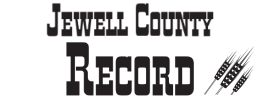Finding the best deals for feed and forage
January 19, 2023
Post Rock Extension District
Livestock Production Agent
Drought conditions are a common occurrence and livestock producers consequently plan for the worst and hope for the best. Complicating matters this year is the extent to which drought is impacting areas of the U.S., the dramatic increase in feed cost and transportation cost for purchased feed. How does a producer adapt to the current situation without affecting cowherd productivity, while also keeping feed costs from breaking the bank?
First, conduct a forage inventory and calculate forage needs. Before any forages or feed ingredients are purchased, the first step a producer should take is to conduct an inventory of their current or anticipated supplies. Then, a determination should be made as to what quantity of forages will be needed to meet the feed requirements of the herd for the upcoming season. Conducting a forage inventory necessitates the counting and estimating of the weights of all available baled and bulk forages on hand, the nutritional value of the forages, the class and weight of all livestock and how the forage is fed (bunks, hay feeder type or if fed on the ground). The K-State hay inventory worksheet is an excellent tool to facilitate this important step.
Stretching existing forage supplies by reducing waste is especially important this year. Factors that contribute to waste include forage subjected to trampling, leaf shatter, chemical and physical deterioration, and urine-fecal contamination. The extent of these losses depends upon the feeding method, interval between feedings, amounts fed at one time, weather conditions and number of animals fed.
Previous research conducted at K-State (Blasi et al., 1993) has demonstrated that unrolling large round wheat or cane hay can result in waste ranging from 10 percent to 31 percent. Make sure to consider this as calculations are made to determine forage needs.
Feeding hay in smaller amounts or in a feeder is one way to minimize waste and another recommended strategy to reduce forage losses is to rotate feeding areas among well-drained sites on a regular basis. This practice will avoid pasture scarring and reduce the amount of wasted-residual forage.
When deemed necessary to purchase forage or feed, Feed Cost Comparison is an excellent online tool that also will account for shipping cost per ton. This tool will enable one to compare two forages and account for the delivered cost per ton for dry matter, crude protein, and energy.
Feed Energy Index is another excellent online tool developed by the Iowa Beef Center. This tool will rank ten feedstuffs by an energy cost index that accounts for the dry matter and energy content, cost per ton (as fed) and estimated waste.
When making the decision to purchase supplemental energy or protein for the cowherd, the indirect costs of delivering the supplement from the ranch to the pasture should be accounted for as well. Multiple trips per week may need to be made to pastures that are several miles away. A worksheet called KSU-Cattle Supplementation Cost will account for the true cost differences in various supplementation strategies for mileage, equipment, and labor.
Considering all the points made in this article will help ensure a producer is doing their best to purchase forages and feed ingredients at the most economical price, while still meeting their cowherd’s nutritional requirements and maintaining productivity.
Thanks to Dale Blasi, stocker, forages, nutrition, and management specialist at Kansas State University, for sharing information related to managing feed and forage. For further information or questions on finding the tools mentioned in this article, contact me at any Post Rock Extension District office.










Reader Comments(0)